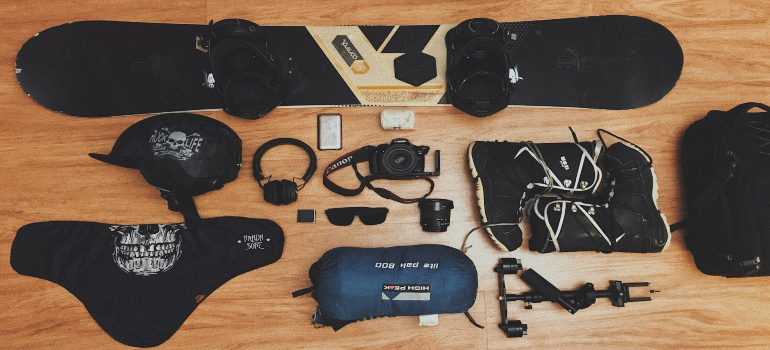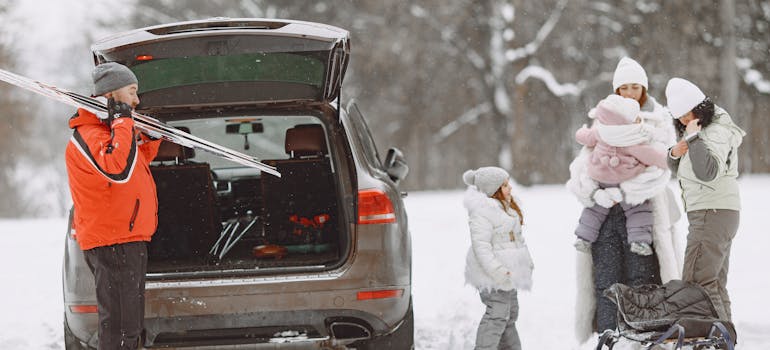How to Transport Winter Sports Gear and Equipment
When you want to transport winter sports gear and equipment, you must be ready for some challenges. From bulky skis and snowboards to the more delicate items like goggles and helmets, each piece requires careful consideration to ensure it arrives at your destination in top condition. The importance of proper packing and transportation cannot be overstated. Not only does it protect your investment in high-quality sports equipment, but it also guarantees that you can hit the slopes or the ice right upon arrival without any delays caused by damaged gear. Partnering with some of the Best Cross Country Movers guarantees you can find a moving company that will help you finish this task obstacle-free.
Preparation for Packing
The first step in preparing your winter sports equipment for transportation is to create an inventory checklist. This list should include every item you plan to bring, from the largest pieces of gear to the smallest accessories. Before packing, it’s crucial to clean and maintain your equipment. Snow residue, dirt, or moisture can cause damage if left unattended, so making sure your gear is dry and clean before packing is essential. This step not only preserves the condition of your gear but also allows you to use it immediately upon arrival.

Disassembling larger items can make them easier to pack and transport. For example, removing bindings from skis or snowboards can reduce their overall size, making them more compact for packing. This process requires a bit of know-how, so if you’re unsure, refer to the manufacturer’s instructions or consult a professional. Remember, packing the gear is more difficult than packing winter clothes for moving, so you should ask for professional help.
Choosing the Right Packing Materials
When it comes to safely transporting your winter sports gear, the packing materials you choose can make a big difference. Each material has its own set of benefits and drawbacks, so it’s important to weigh your options. For example, bubble wrap is great for cushioning your gear, but it’s not the most environmentally friendly option. On the other hand, biodegradable packing peanuts provide a more sustainable choice, though they may not offer the same level of protection for heavier items.
For fragile equipment, such as goggles or helmets, consider using specialized hard cases or extra padding to prevent any damage during transit. It’s also worth noting that while cardboard boxes are a popular choice for their availability and cost-effectiveness, they may not withstand severe weather conditions as well as plastic bins, which offer a more durable and water-resistant solution. If you’re looking to reduce your environmental impact, explore eco-friendly packing solutions. These can include recycled paper, reusable packing blankets, and even old newspapers for filling gaps in boxes. Not only do these options help protect your gear, but they also support sustainability efforts. If you are still not confident in your packing skills, you should consider looking into dependable packing services near you. Have professionals handle it.
Packing Techniques When You Transport Winter Sports Gear and Equipment
Packing your winter sports gear requires attention to detail to ensure everything arrives in top condition. For skis and snowboards, start by wrapping each piece in a soft cloth or bubble wrap to protect the edges and surfaces from scratches. If you have a ski bag or snowboard bag, use it to further secure your equipment. For added protection, consider strapping the skis or snowboard together to prevent movement inside the bag. Ice skates present a unique challenge due to their sharp blades. To pack them safely, cover the blades with protective guards and wrap each skate in a thick cloth or towel. This not only protects the blades but also prevents them from damaging other items in your luggage.

Maximizing space while protecting your gear is key. For bulky items like helmets and boots, fill them with smaller items like gloves or hats. This not only saves space but also helps maintain the shape of the boots and helmets. When packing clothing, rolling instead of folding can save space and reduce wrinkles. Labeling each box or bag with its contents and handling instructions can greatly simplify the unpacking process. It also helps in quickly identifying necessary items without having to search through every packed piece. Organizing your gear by category (ski equipment, clothing, accessories) in separate bags or boxes can streamline both packing and unpacking, making the process more efficient. By following these steps, you can be certain that your winter sports gear is packed securely and efficiently, ready for whatever adventures await.
Transportation Options
When you transport winter sports gear and equipment from point A to point B, you’ve got a few choices: by car, plane, or shipping services. Each option comes with its own set of advantages and disadvantages tailored to transporting winter sports equipment. Using your car gives you control over how your gear is handled and stored. It’s great for short to medium distances and means you can pack your car to fit your specific needs. However, space can be a limitation, especially if you’re traveling with a group or have a lot of equipment.
Flying with gear introduces another set of considerations. Airlines have specific policies and fees for oversized and sports equipment, which can vary widely. It’s crucial to check these in advance to avoid surprises at the airport. While flying gets your gear to distant locations quickly, the potential for damage or loss by airlines can’t be ignored. Shipping services offer a convenient alternative, especially if you’re dealing with bulky items or international travel. They take the hassle out of carrying gear through airports or cramming it into your car. However, this convenience comes at a cost, and you’ll need to plan it all well in advance.
Arrival and Unpacking
Once you reach your destination, the way you unpack and check your gear can set the tone for your trip. Start by inspecting all items for any damage that might have occurred during transit. This step is crucial to avoid any surprises when you’re ready to hit the slopes or the ice. Finding the right place for your gear is next. If your accommodation doesn’t offer specific storage solutions, look for a dry, secure area to store your equipment. This keeps it in good condition and ready for use.

As you enjoy your time, it’s smart to think ahead about the return journey. Consider how you’ll repack your gear, taking into account any new items you might be bringing back. Also, reevaluate what worked and what didn’t in your packing and transportation choices to make the return smoother. One more thing you should consider is the available space in your new home. Sometimes, it’s better to utilize reliable storage services to store your gear since you are not going to need it all year round.
Take Your Gear With You and Don’t Worry
Trying to transport winter sports gear and equipment requires careful planning, the right materials, and an understanding of your transportation options. By following the tips outlined, you can ensure your gear arrives safely, remains in top condition, and is ready for adventure upon your arrival. Remember, the key to a smooth transportation process is not just in how you pack but also in choosing the right transportation method and being prepared for both arrival and departure. Prioritize the safety and care of your gear during transit to make the most of your winter sports experience.

